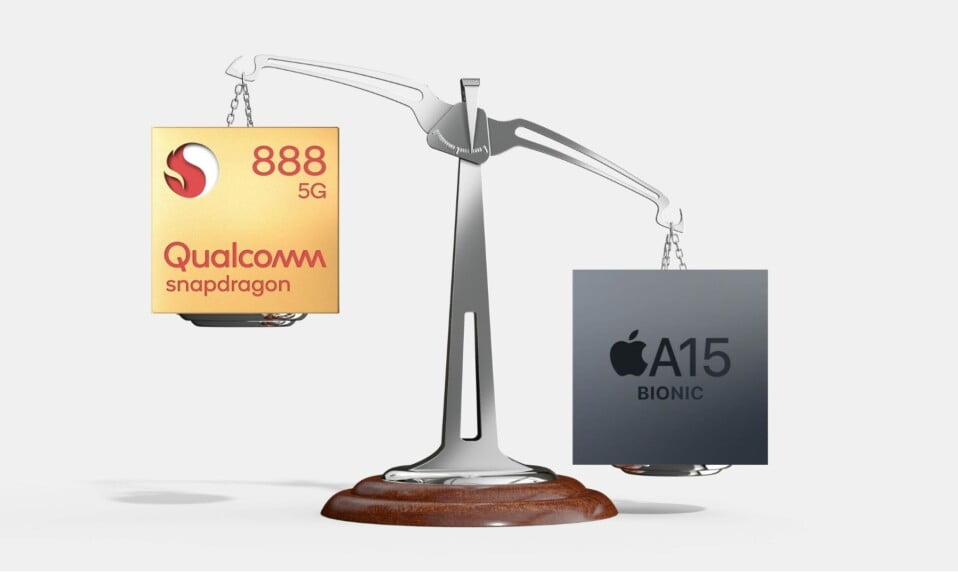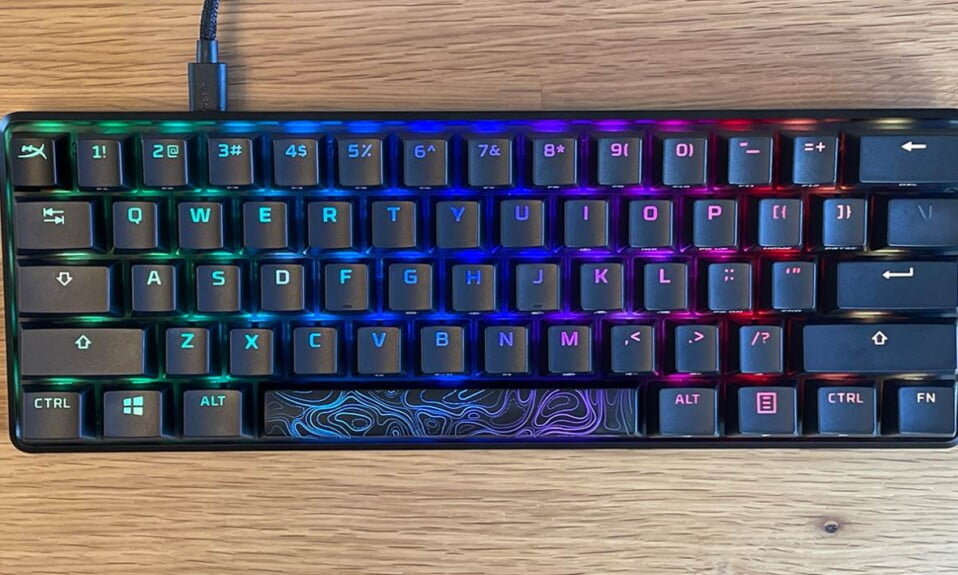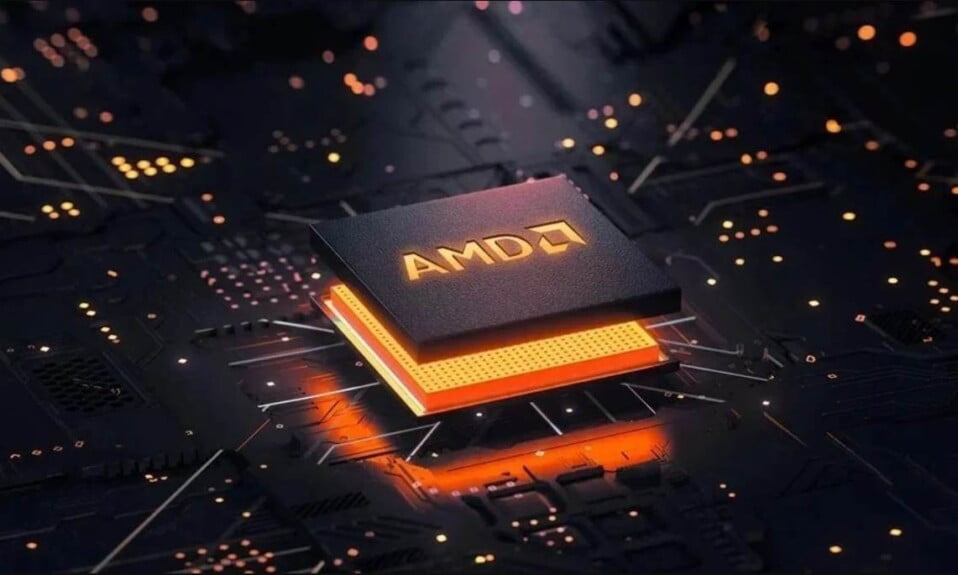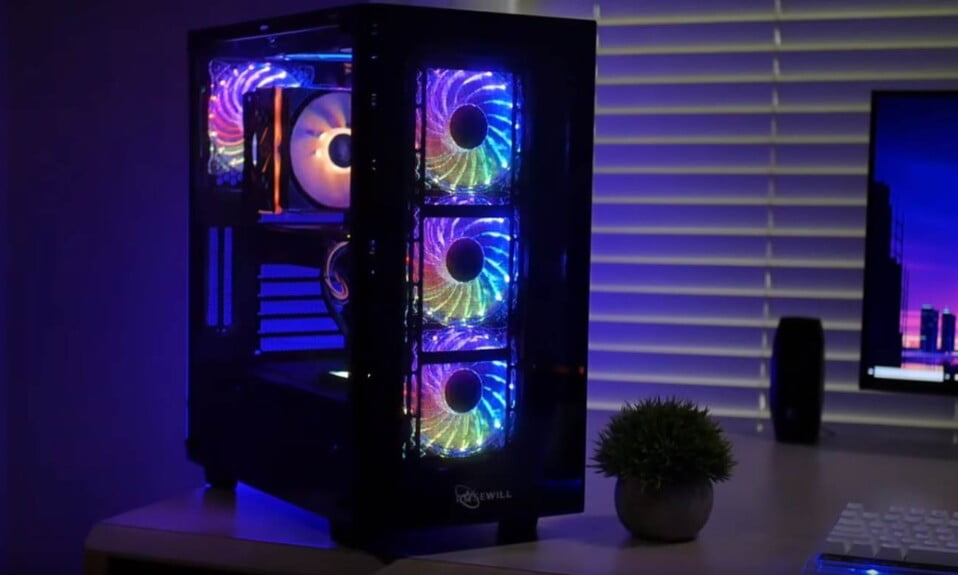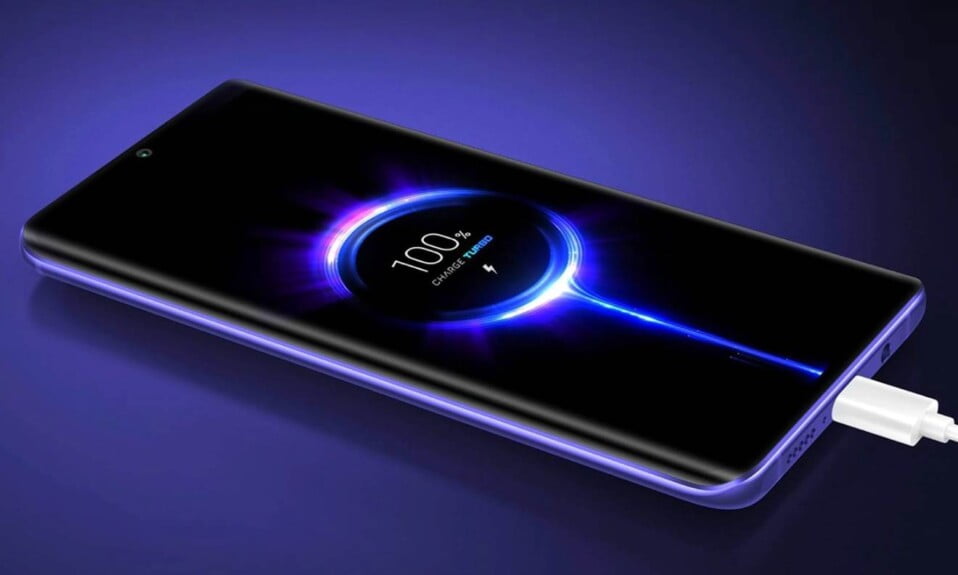Apple unveiled its new iPhone 13 phones with Apple’s own A15 Bionic SoC earlier this week. Apple claims that its new SoC outperforms all of its rivals in the market. This primarily refers to Qualcomm’s Snapdragon 888 or 888+ processor.
Standard benchmark tests are now an objective way to evaluate this claim. The CPU and GPU scores would be reflected in this. The same is true now, and the A15 easily outperforms the competition.
Apple A15 Bionic Chipset Vs. Snapdragon 888: Specifications
| Memory | Snapdragon 888 | Apple A15 Bionic |
| Architecture | 1x 2.84 GHz – Kryo 680 Prime (Cortex-X1) 3x 2.42 GHz – Kryo 680 Gold (Cortex-A78) 4x 1.8 GHz – Kryo 680 Silver (Cortex-A55) |
2x 3.223 GHz – Avalanche 4x 1.82 GHz – Blizzard |
| Cores | 8 | 6 |
| Frequency | 2840 MHz | 3200 MHz |
| Instruction set | ARMv8.4-A | ARMv8.5-A |
| L1 cache | 512 KB | – |
| L2 cache | 1 MB | 8 MB |
| L3 cache | 4 MB | – |
| Process | 5 nanometers | 5 nanometers |
| Transistor count | – | 15 billion |
| TDP | 10 W | – |
| Graphics | ||
| GPU name | Adreno 660 | Apple GPU |
| Architecture | Adreno 600 | – |
| GPU frequency | 840 MHz | 1511 MHz |
| Execution units | 2 | 5 |
| Shading units | 512 | – |
| FLOPS | 1720 Gigaflops | – |
| Vulkan version | 1.1 | – |
| OpenCL version | 2.0 | – |
| DirectX version | 12 | – |
| Memory | ||
| Memory type | LPDDR5 | – |
| Memory frequency | 3200 MHz | 2750 MHz |
| Bus | 4x 16 Bit | – |
| Max bandwidth | 51.2 Gbit/s | – |
| Max size | 24 GB | 8 GB |
| Multimedia ISP | ||
| Neural processor (NPU) | Hexagon 780 | Neural Engine |
| Storage type | UFS 3.0, UFS 3.1 | NVMe |
| Max display resolution | 3840 x 2160 | – |
| Max camera resolution | 1x 200MP, 2x 25MP | – |
| Video capture | 8K at 30FPS, 4K at 120FPS | 4K at 60FPS |
| Video playback | 8K at 30FPS | 4K at 60FPS |
| Video codecs | H.264, H.265, VP8, VP9 | H.264, H.265, Motion JPEG |
| Audio codecs | AAC, AIFF, CAF, MP3, MP4, WAV | AAC, AIFF, CAF, MP3, MP4, WAV, AC-3, E-AC-3, AAX, AAX+ |
| Connectivity | ||
| Modem | X60 | – |
| 4G support | LTE Cat. 24 | LTE Cat. 24 |
| 5G support | Yes | Yes |
| Download speed | Up to 7.5 Gbps (5G) | Up to 8 Gbps (5G) |
| Upload speed | Up to 3 Gbps (5G) | Up to 5 Gbps (5G) |
| Wi-Fi | 6 | 6 |
| Bluetooth | 5.2 | 5.0 |
| Navigation | GPS, GLONASS, Beidou, Galileo, QZSS, SBAS, NAVIC | GPS, GLONASS, Beidou, Galileo, QZSS, SBAS |
| Information | ||
| Announced | December 2020 | September 2021 |
| Class | Flagship | Flagship |
| Model number | SM8350 | APL1W05 |
| Official Website | Qualcomm Snapdragon 888 | N/A |
It’s no surprise that Apple’s new iPhones are significantly faster than their predecessors, given that the previous generation A14 Bionic was already outperforming Snapdragon scores.
According to the Geekbench 5 metric, high-end Android devices with Qualcomm Snapdragon 888 (the most popular flagship processor) have a single-core score of around 1100 and a multi-core score of around 3500. Here’s how fast the Oneplus 9 Pro clocked in Geekbench 5:
It’s worth noting that the Snapdragon 888 was already behind Apple’s A14 Bionic CPU, which was included in the iPhone 12 Pro (which scored 1600 in the single-core score and 4100 in multi-core score respectively).
And this was before the Snapdragon 888 was officially announced when the iPhone 12 was released.
When comparing the Snapdragon 888 and the A15, the latter has a 13% faster clock speed (3200x2840MHz). A15 also has a more advanced instruction set architecture. Examine the difference in CPU performance between single and multi-core scores for both-
Snapdragon 888:
| Single-core Score | Multi-core Score |
| 1109 | 3687 |
Apple A15 Bionic SoC:
| Single-core Score | Multi-core Score |
| 1735 | 4806 |
When it comes to GPU, Apple has given A15 a 20 percent boost, whereas Qualcomm’s Snapdragon 888, despite receiving a 35 percent boost last year, is still lagging behind Apple in terms of performance.
Antutu 9: Apple A15 Bionic Chipset Vs. Snapdragon 888
 *We cannot directly compare AnTuTu results from iOS and Android. This is just for illustration purpose
*We cannot directly compare AnTuTu results from iOS and Android. This is just for illustration purpose
Geekbench 5
Using the A15’s neural engine is also one of the most important features of the iPhone 13 series. This is used in iPhone’s Cinematic mode to detect where the subjects are facing by identifying faces in a video scene. For its pro models, A15 claims to be able to record in the low-compression Pro-Res video format.
Even though there were hopes that Google’s Tensor processor would make a difference in this area, the initial benchmark results aren’t promising.
According to leaked Geekbench scores, Tensor received a score of 2200, which is lower than the Snapdragon 888. This indicates that Apple will continue to be the market leader in this area for the time being.
All of this is to say that benchmarks aren’t everything, especially when it comes to real-world use cases. As a result, for the vast majority of users, SoC performance is not the most important consideration when purchasing a device.
There are some very specific applications where the processor’s increased performance is useful, but you don’t need that much power for the usual social media apps, browsing, texting, and video calling, and it isn’t the only thing that matters.
So, it all comes down to whether you’re a power user or not, and whether you prefer iOS or Android.
Well, that’s all we have for you about Apple A15 Bionic vs. Snapdragon 888 which ones better. We hope this guide helped you to understand which one is best for you.
If you have any doubts or queries, comment below using your name and email ID. If you liked this, don’t forget to check out our gaming, troubleshooting, and computing guides.

